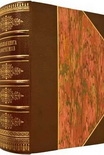Make: Electronics, Charles Platt [list of ebook readers .txt] 📗

- Author: Charles Platt
Book online «Make: Electronics, Charles Platt [list of ebook readers .txt] 📗». Author Charles Platt
Figure 4-54. This relay circuit could illustrate the desired logic for two telephone customers wanting to share one line, and its behavior is almost identical to that of the NAND schematic shown in Figure 4-48.
Shannon saw that Boolean analysis could be used for this purpose. Also, if you used an “on” condition to represent numeral 1 and an “off” condition to represent numeral 0, you could build a system of relays that could count. And if it could count, it could do arithmetic.
When vacuum tubes were substituted for relays, the first practical digital computers were built. Transistors took the place of vacuum tubes, and integrated circuit chips replaced transistors, leading to the desktop computers that we now take for granted today. But deep down, at the lowest levels of these incredibly complex devices, they still use the laws of logic discovered by George Boole. Today, when you use a search engine online, if you use the words AND and OR to refine your search, you’re actually using Boolean operators.
Essentials
Logic gate basics
The NAND gate is the most fundamental building block of digital computers, because (for reasons which I don’t have space to explain here) it enables digital addition. If you want to explore more try searching online for topics such as “binary arithmetic” and “half-adder.”
Figure 4-55. Ann and Bob attempt to overcome the limitations of Boolean logic.
Generally, there are seven types of logic gates:
AND
NAND
OR
NOR
XOR
XNOR
NOT
Of the six two-input gates, the XNOR is hardly ever used. The NOT gate has a single input, and simply gives a negative output when the input is positive or a positive output when the input is negative. The NOT is more often referred to as an “Inverter.” The symbols for all seven gates are shown in Figure 4-56.
Figure 4-56. American symbols for the six types of two-input logic gates, and the single-input inverter.
I’ve shown the American symbols. Other symbols have been adopted in Europe, but the traditional symbols shown here are the ones that you will usually find, even being used by Europeans. I also show the truth tables, in Figure 4-57, illustrating the logical output (high or low) for each pair of inputs of each type of gate.
Figure 4-57. Inputs and corresponding outputs for the six types of logic gates (note that the XNOR gate is seldom used). The minus signs indicate low voltage, close to ground potential. The plus signs indicate higher voltage, close to the positive potential of the power supply in the circuit. The exact voltages will vary depending on other components that may be actively connected.
Essentials
Logic gate basics (continued)
If you have difficulty visualizing logic gates, a mechanical comparison may help. You can think of them as being like sliding plates with holes in them, in a bubblegum machine. Two people, A and B, can push the plates. These people are the two inputs, which are considered positive when they are doing something. (Negative logic systems also exist, but are uncommon, so I’m only going to talk about positive systems here.)
The flow of bubblegum represents a flow of positive current. The full set of possibilities is shown in Figures 4-58 through 4-63.
Figure 4-58.
Figure 4-59.
Essentials
Logic gate basics (continued)
Figure 4-60.
Figure 4-61.
Essentials
Logic gate basics (continued)
Figure 4-62.
Background
The confusing world of TTL and CMOS
Back in the 1960s, the first logic gates were built with Transistor-Transistor Logic, abbreviated TTL, meaning that tiny bipolar transistors were etched into a single wafer of silicon. Soon, these were followed by Complementary Metal Oxide Semiconductors, abbreviated CMOS. Each of these chips was a collection of metal-oxide field-effect transistors (known as MOSFETs). The 4026 chip that you used earlier is an old CMOS.
You may remember that bipolar transistors amplify current. TTL circuits are similar: they are sensitive to current, rather than voltage. Thus they require a significant flow of electricity, to function. But CMOS chips are like the programmable unijunction transistor that I featured previously. They are voltage-sensitive, enabling them to draw hardly any current while they are waiting for a signal, or pausing after emitting a signal.
The two families named TTL and CMOS still exist today. The table in Figure 4-64 summarizes their basic advantages and disadvantages. The CMOS series, with part numbers from 4000 upward, were easily damaged by static electricity but were valuable because of their meager power consumption. The TTL series, with part numbers from 7400 upward, used much more power but were less sensitive and very fast. So, if you wanted to build a computer, you used the TTL family, but if you wanted to build a little gizmo that would run for weeks on a small battery, you used the CMOS family.
From this point on everything became extremely confusing, because CMOS manufacturers wanted to grab market share by emulating the advantages of TTL chips. Newer generations of CMOS chips even changed their part numbers to begin with “74” to emphasize their compatibility, and the functions of pins on CMOS chips were swapped around to match the functions of pins on TTL chips. Consequently, the pinouts of CMOS and TTL chips are usually now identical, but the meaning of “high” and “low” states changed in each new generation, and the maximum supply voltages for CMOS chips were revised downward. Note I have included question marks beside two categories in the CMOS column, as modern CMOS chips have overcome those disadvantages—at least to some extent.
Here’s a quick summary, which will be useful to you if you look at a circuit that you find online, and you wonder about the chips that have been specified.
Where you see a letter “x,” it means that various numbers may appear in that location. Thus “74xx” includes the 7400 NAND gate, the 7402 NOR gate, the 74150 16-bit data selector, and so on. A combination of letters





Comments (0)